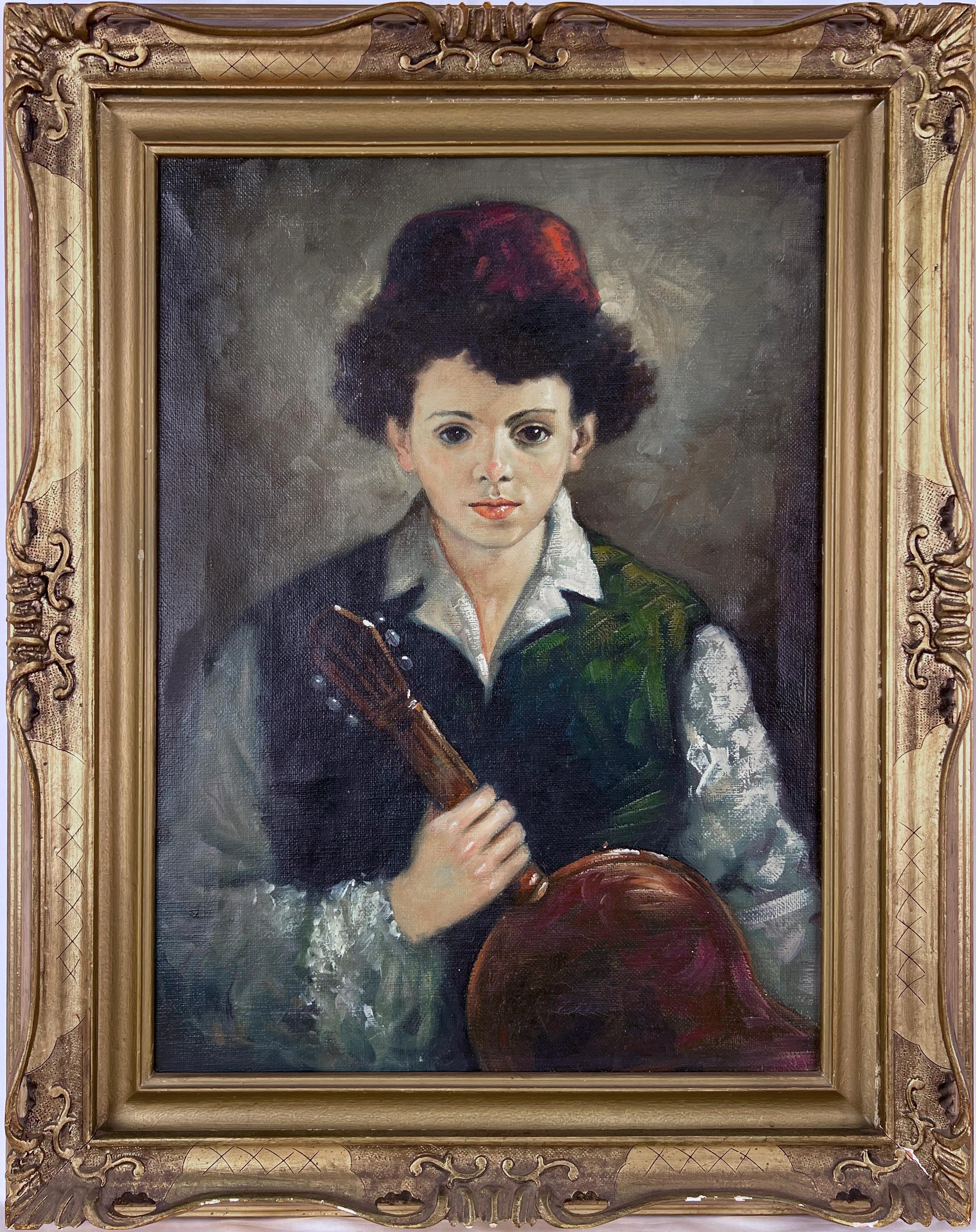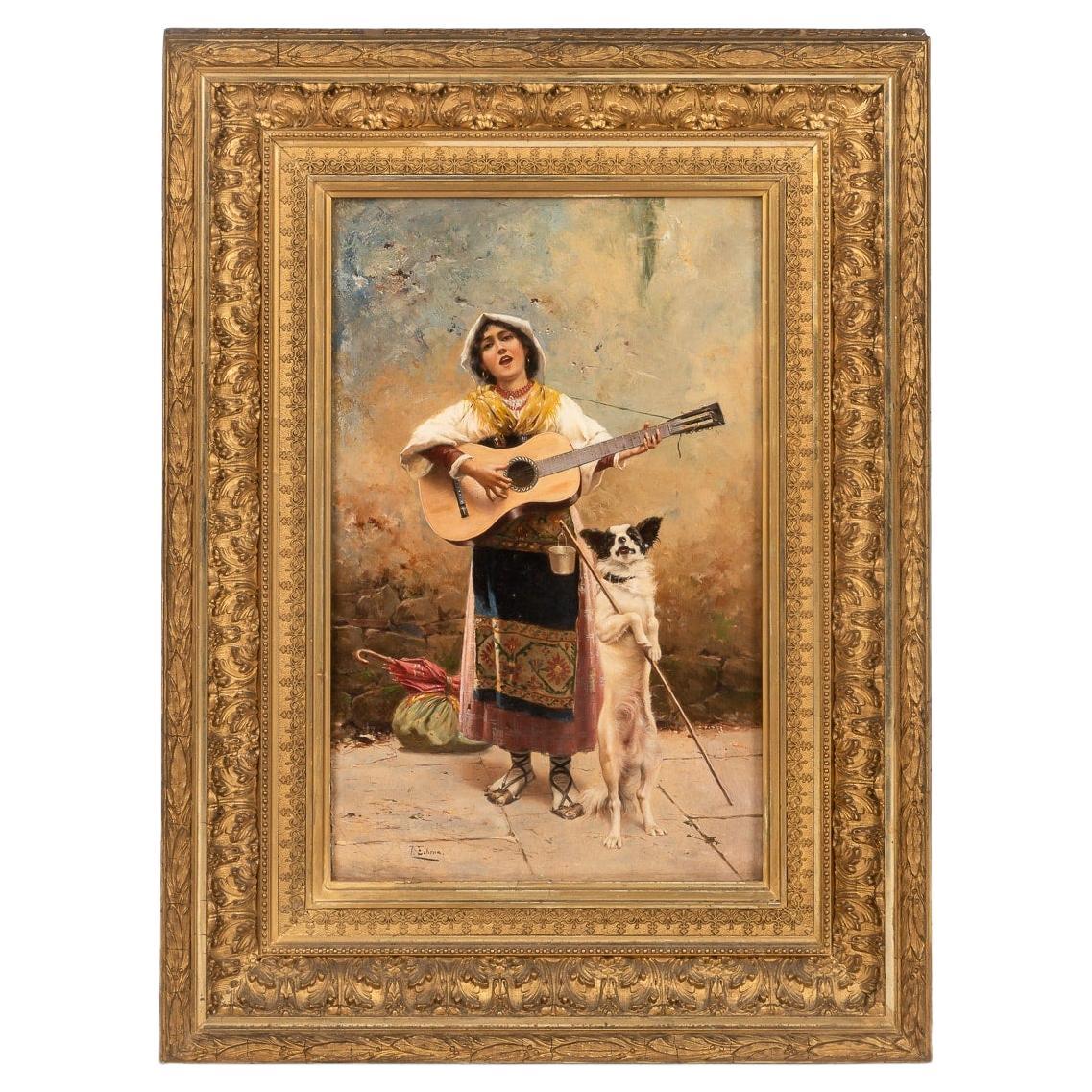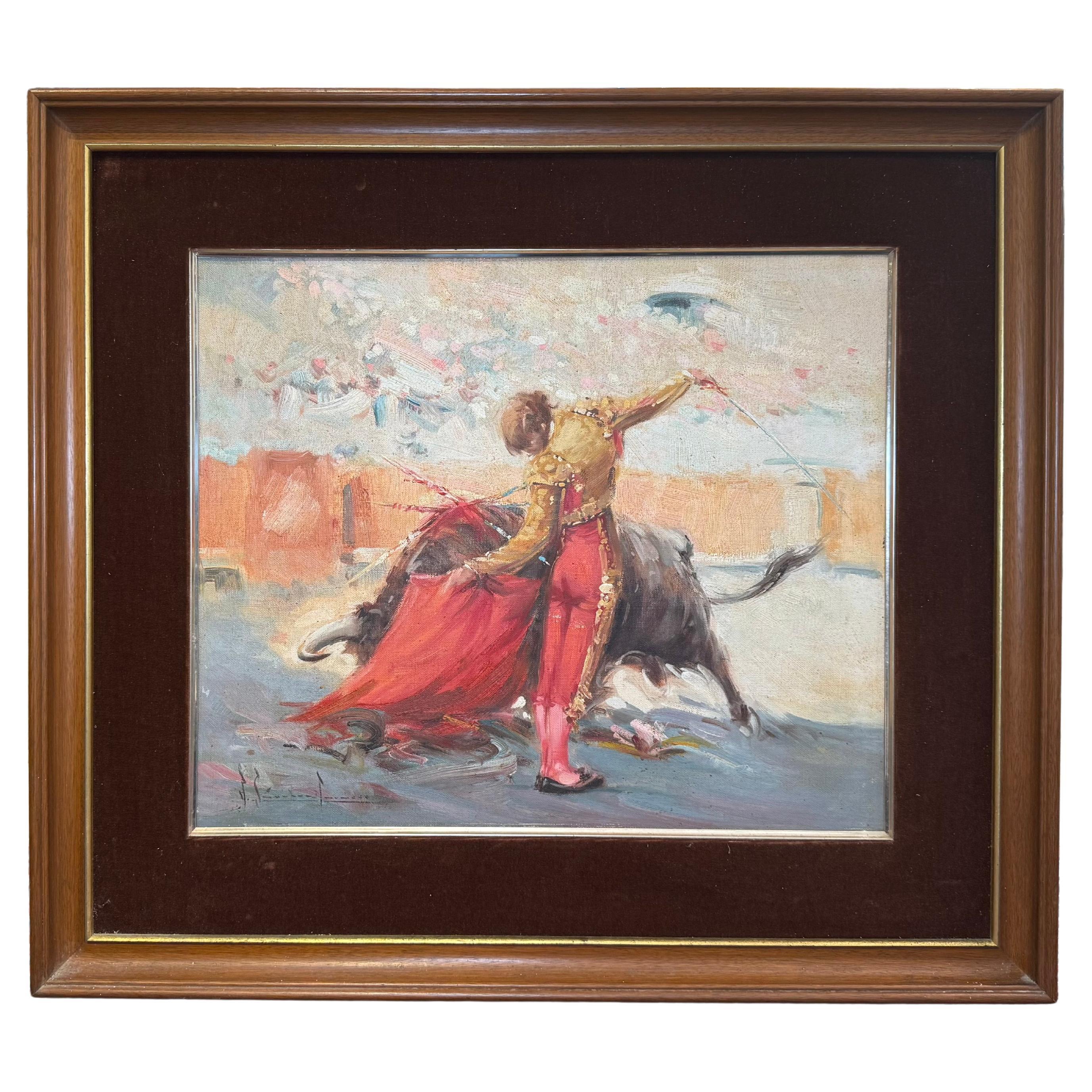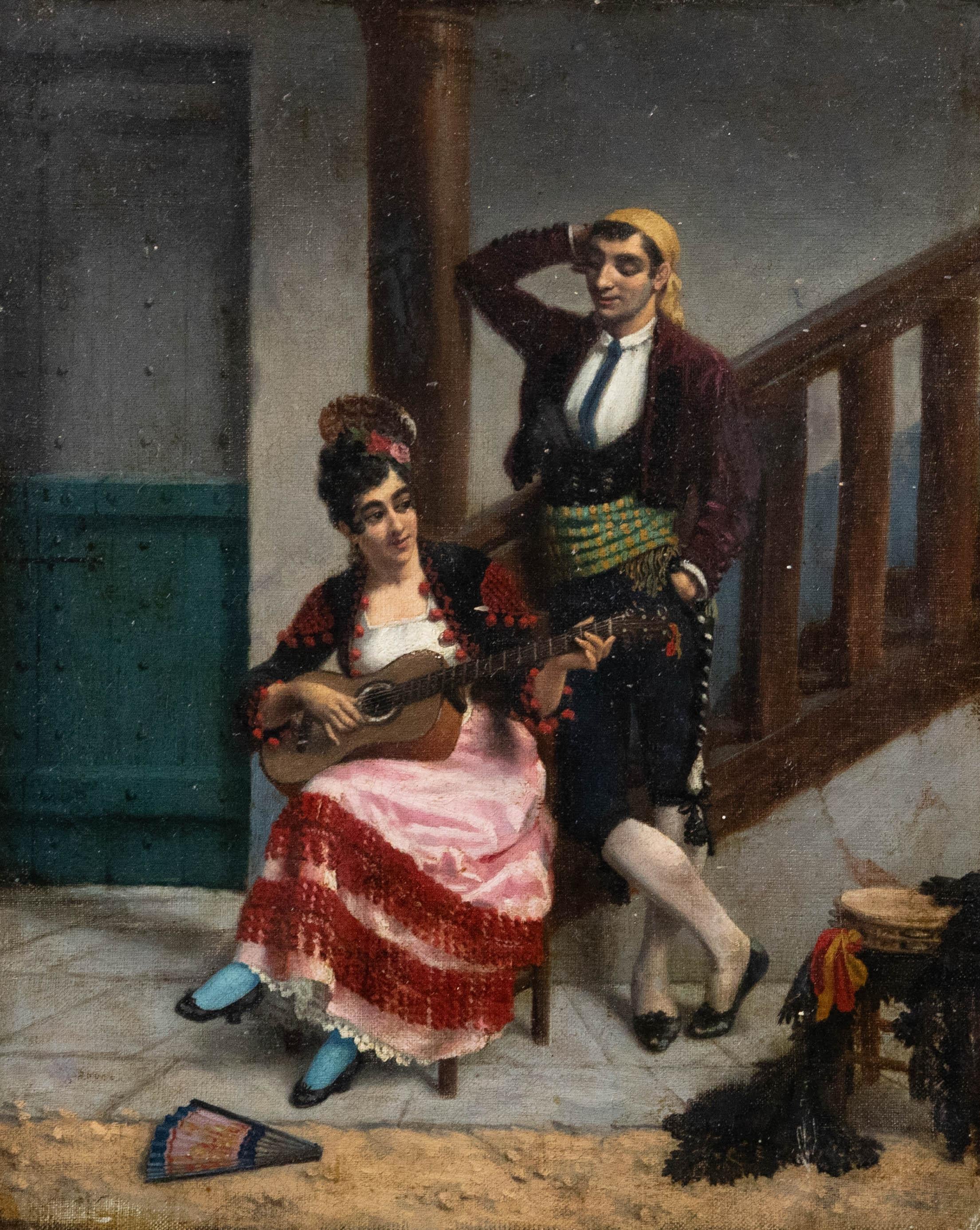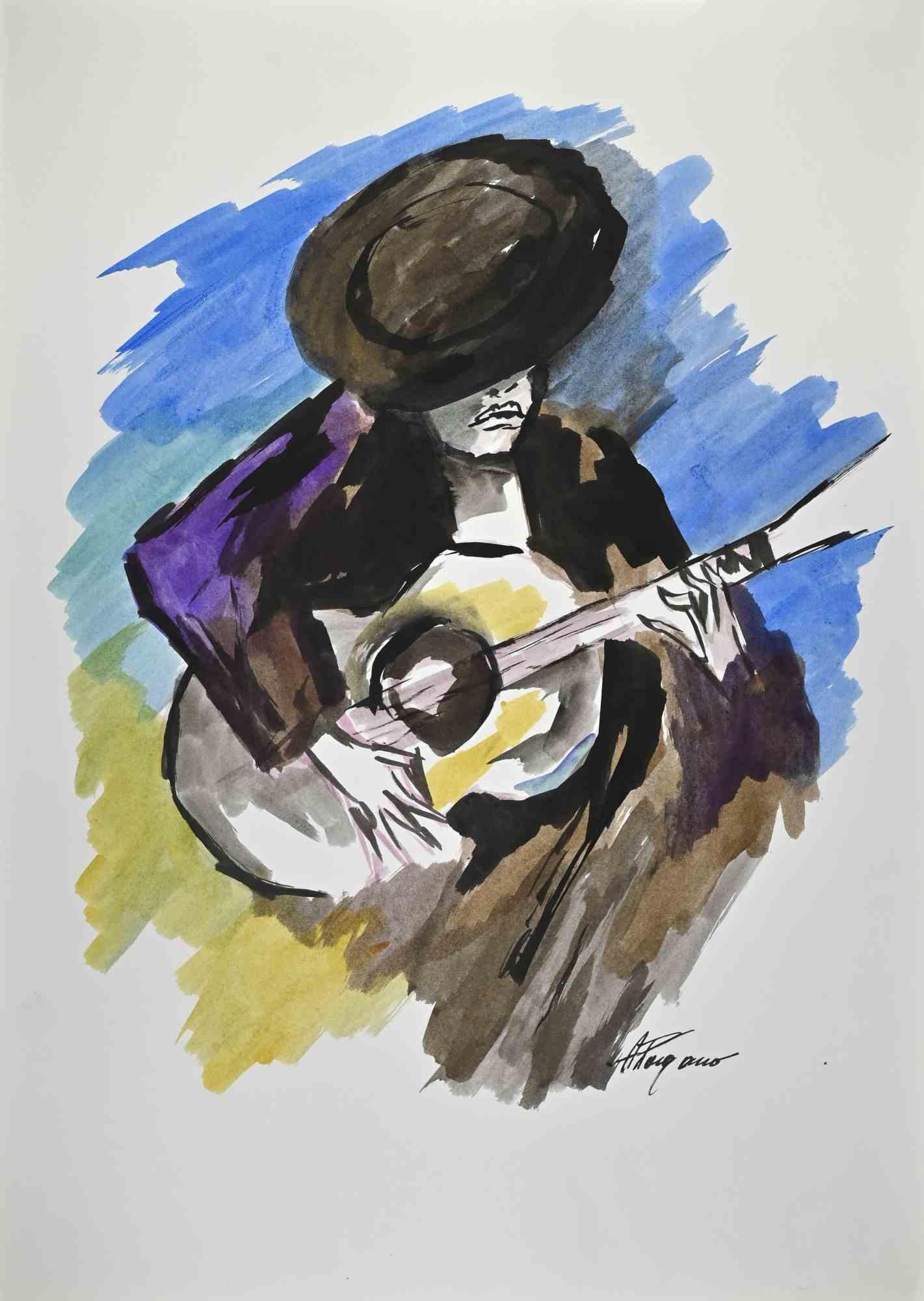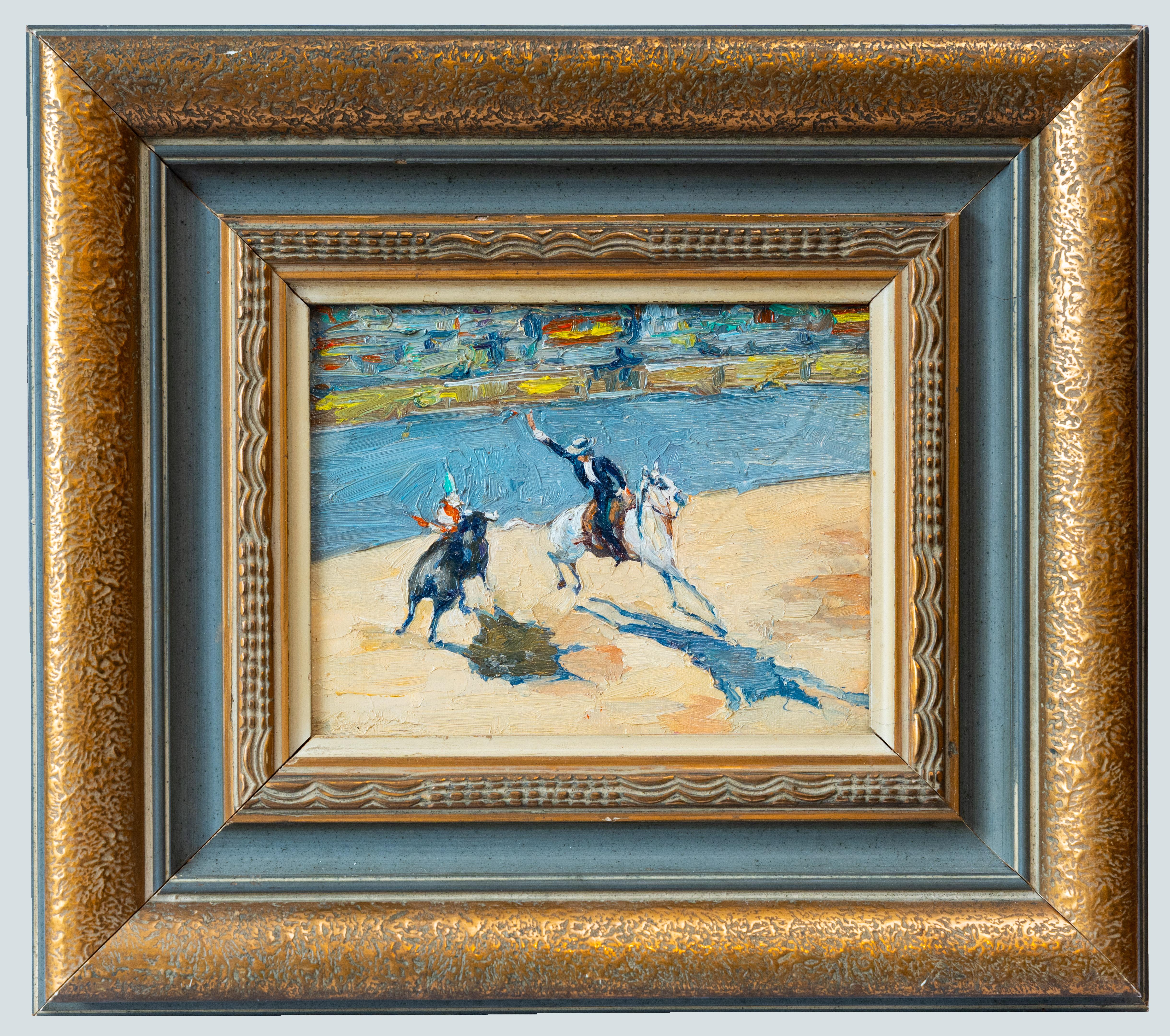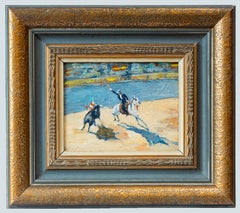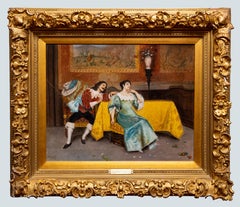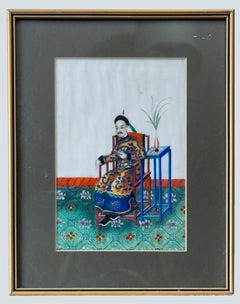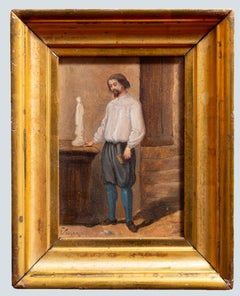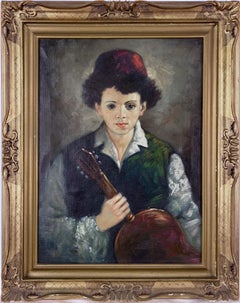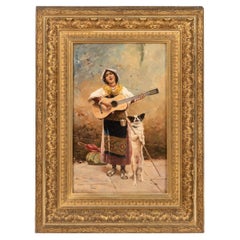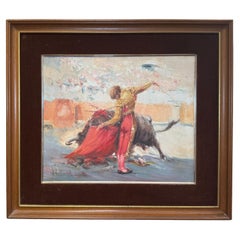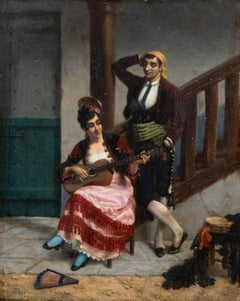Items Similar to Spanish bullfighter with his guitar, Spanish School early 20th century
Want more images or videos?
Request additional images or videos from the seller
1 of 4
Spanish School early 20th centurySpanish bullfighter with his guitar, Spanish School early 20th century
$849.50
£620
€723.20
CA$1,163.61
A$1,294.19
CHF 675.78
MX$15,748.86
NOK 8,630.78
SEK 8,094.15
DKK 5,397.49
Shipping
Retrieving quote...The 1stDibs Promise:
Authenticity Guarantee,
Money-Back Guarantee,
24-Hour Cancellation
About the Item
A captivating painting from the Spanish School dating to the early 20th century. This work is an evocative portrayal of the iconic figure of a bullfighter, dressed in traditional Spanish costume, standing with his guitar in hand. The figure exudes a sense of elegance and pride, typical of the bullfighter’s dignified yet bold persona.
The bullfighter is shown in a moment of repose, holding his guitar and having a glass of red wine, suggesting a connection to both the dramatic art of bullfighting and the passionate, soulful music of Spain. The combination of these two elements—bullfighting and music—captures the emotional intensity of Spanish culture during this period, highlighting the deep cultural ties between these two arts.
The bullfighter's ornate attire, rich with intricate details, showcases the Spanish tradition and the artist's meticulous attention to the textures and colors of the fabric. The guitar, often a symbol of Spanish identity, adds another layer of depth, tying together the themes of performance, tradition, and emotion.
This piece, with its powerful symbolism and cultural references, evokes the romance and drama of Spain’s history, art, and traditions, making it a remarkable example of late 19th-century / early 20th-century Spanish painting.
- Creator:Spanish School early 20th century (Spanish)
- Dimensions:Height: 14.77 in (37.5 cm)Width: 8.67 in (22 cm)
- More Editions & Sizes:n/aPrice: $1,096
- Medium:
- Period:
- Condition:
- Gallery Location:London, GB
- Reference Number:Seller: 51stDibs: LU2841215972762
About the Seller
New to 1stDibs
Joined in the past six months.
No Reviews Yet
Vetted Professional Seller
Every seller passes strict standards for authenticity and reliability
1stDibs seller since 2025
Typical response time: 3 hours
- ShippingRetrieving quote...Shipping from: London, United Kingdom
- Return Policy
Authenticity Guarantee
In the unlikely event there’s an issue with an item’s authenticity, contact us within 1 year for a full refund. DetailsMoney-Back Guarantee
If your item is not as described, is damaged in transit, or does not arrive, contact us within 7 days for a full refund. Details24-Hour Cancellation
You have a 24-hour grace period in which to reconsider your purchase, with no questions asked.Vetted Professional Sellers
Our world-class sellers must adhere to strict standards for service and quality, maintaining the integrity of our listings.Price-Match Guarantee
If you find that a seller listed the same item for a lower price elsewhere, we’ll match it.Trusted Global Delivery
Our best-in-class carrier network provides specialized shipping options worldwide, including custom delivery.More From This Seller
View AllSpanish bullfighting, Spanish School, 20th century
Located in London, GB
This striking and dynamic painting, attributed to the 20th-century Spanish School, captures the raw intensity and drama of a traditional Spanish bullfighting scene, focusing on the r...
Category
20th Century Figurative Paintings
Materials
Canvas, Oil, Board
A romantic interlude, by Alberto Cecchini. 19th century Italian
Located in London, GB
"A Romantic Interlude" by Alberto Cecchini is a wonderful work of art from the 19th century that embodies the elegance and emotional intensity of the Romantic era in Italy. The paint...
Category
19th Century Figurative Paintings
Materials
Canvas, Oil
Chinese portrait of a gentleman from the court
By 19th Century Chinese school
Located in London, GB
The painting is executed with meticulous precision on delicate rice paper, typical of Chinese export art produced for Western collectors in the 18th or 19th century. Its composition ...
Category
19th Century Figurative Paintings
Materials
Gouache, Rice Paper
A Sculptor in his Studio, F Vogler, signed
Located in London, GB
The 'Sculptor in His Studio' oil on panel painting, signed by F Vogler, captures the intense, intimate atmosphere of an artist at work. The scene is set in a small, sunlit studio. T...
Category
Early 20th Century Interior Paintings
Materials
Oil, Wood Panel
Odalisque, by Georges Philippe Jacqmotte (1876–1949), signed and dated
Located in London, GB
Orientalist painting by Georges Philippe Jacqmotte (1876–1949), a Belgian painter known for his Impressionist landscapes and still lifes.
'Odalisque' is the French term odalisque c...
Category
Late 19th Century Figurative Paintings
Materials
Canvas, Oil
Children playing with a donkey
By George Harvey
Located in London, GB
Sir George Harvey was a prominent Scottish painter, born on 1 February 1806 in St Ninians (now Stirling), the son of a watchmaker. Although he initially apprenticed as a bookseller i...
Category
19th Century English School Figurative Paintings
Materials
Oil, Board
You May Also Like
Portrait of Boy and Guitar Original oil by Angeli - Italy circa 1960
Located in Soquel, CA
Portrait of Boy and Guitar Original oil by Angeli - Italy circa 1960
Classical portrait of a young boy ad his guitar by Angeli, an unknown Italian painter (Italy, 20th Century). Roc...
Category
1950s Figurative Paintings
Materials
Linen, Oil, Stretcher Bars
Oil On Board Of A Woman Playing Guitar, Signed By José Echena (Spain 1845-1909)
Located in Royal Tunbridge Wells, Kent
Antique 19th Century painting of a woman playing a guitar, alongside her dog who is standing on its heind legs holding a beggers can. ...
Category
Antique 19th Century Spanish Paintings
Materials
Canvas, Paint
Oil Painting Of The Spaniard Bullfighter El Cordobés
Located in Guaynabo, PR
This is an Oil Painting of El Cordobés. It depicts the Spaniard bull fighter, El Cordobés facing with gallantry and gracefulness the strong and wild bull in a bull ring. He is wearin...
Category
20th Century Paintings
Materials
Canvas
Spanish School Early 20th Century Oil - The Musical Couple
Located in Corsham, GB
Indistinctly signed to the lower left. On canvas on stretchers.
Category
20th Century Figurative Paintings
Materials
Oil
$393 Sale Price
20% Off
Guitar Player - Drawing by Arturo Pagano - 1980s
Located in Roma, IT
Guitar Player is a modern artwork realized by Arturo Pagano in the 1980s.
Watercolor.
Hand-signed.
Good conditions
Category
1980s Contemporary Figurative Drawings and Watercolors
Materials
Paper, Watercolor
Hans Kerber (Austria b. 1920) Original Oil Painting, Man with Guitar, Framed
Located in Palm Coast, FL
Bring warmth and charm into your home with this delightful original oil painting by Austrian artist Hans Kerber (b. 1920–?), portraying an elderly gentleman joyfully holding a guitar...
Category
Late 20th Century Impressionist Portrait Paintings
Materials
Oil
More Ways To Browse
Antique Spanish Art
Antique Spanish Oil Painting
19th Century Spanish Paintings
Spanish Costume
Glass Guitar
Spanish Guitar
Wine Glass Oil Painting
Bullfighting Art
Antique Guitar
Antique Guitars
Bullfight Paintings
Antique Spanish Guitars
Whisky Paintings
Civil War Soldiers
Dog Dutch Painting
Dolly Paintings
Girl With Braids
Hockey Painting
